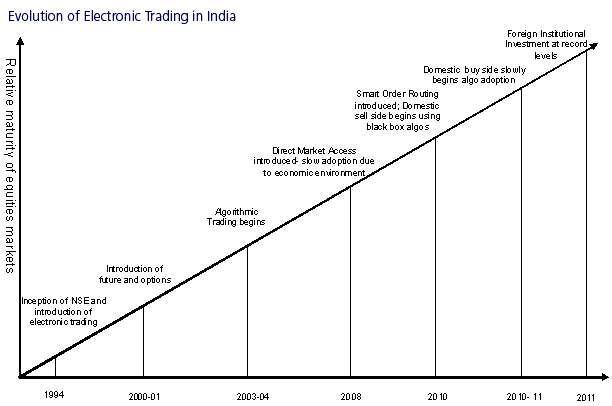Electronic Trading in India
No Country for Old Men
Abstract
The uneven pace of financial sector liberalization in India has been a bone of contention for some time. There have been similar disagreements about the manner in which electronic trading has been regulated. Foreign firms have entered India expecting it to be like other developing markets, but have found it much more difficult to compete effectively, facing hurdles in rolling out their services.
In a new report, Electronic Trading in India: No Country for Old Men, Celent studies the growth of electronic trading in Indian exchange-based markets, including equity, foreign exchange, and commodities. The Indian capital markets have gone through a gradual pace of liberalization. Over the last decade, steps have been put in place to allow technologies such as algorithmic trading, direct market access (DMA), and smart order routing (SOR). The country’s financial markets are poised to become international centers for electronic trading.

"In spite of the hiccups, the Indian market is set for some interesting times ahead," says Anshuman Jaswal, Celent Senior Analyst and author of the report. "As the issues between the exchanges are resolved and regulators become more adept at handling the rapid advances in trading technology, the Indian exchanges and brokerages will compete for dominance in the Asia-Pacific region."
This report compares the local market with some of its Asia-Pacific counterparts. It then studies the current levels of electronic trading in India, including algorithmic trading in equities, currency and commodity markets, buy side adoption of electronic trading, DMA, and SOR. This is followed by an algo vendor comparison, supported by an appendix which examines the offerings of some leading vendors. Finally, the report analyzes the regulation concerning the industry.

